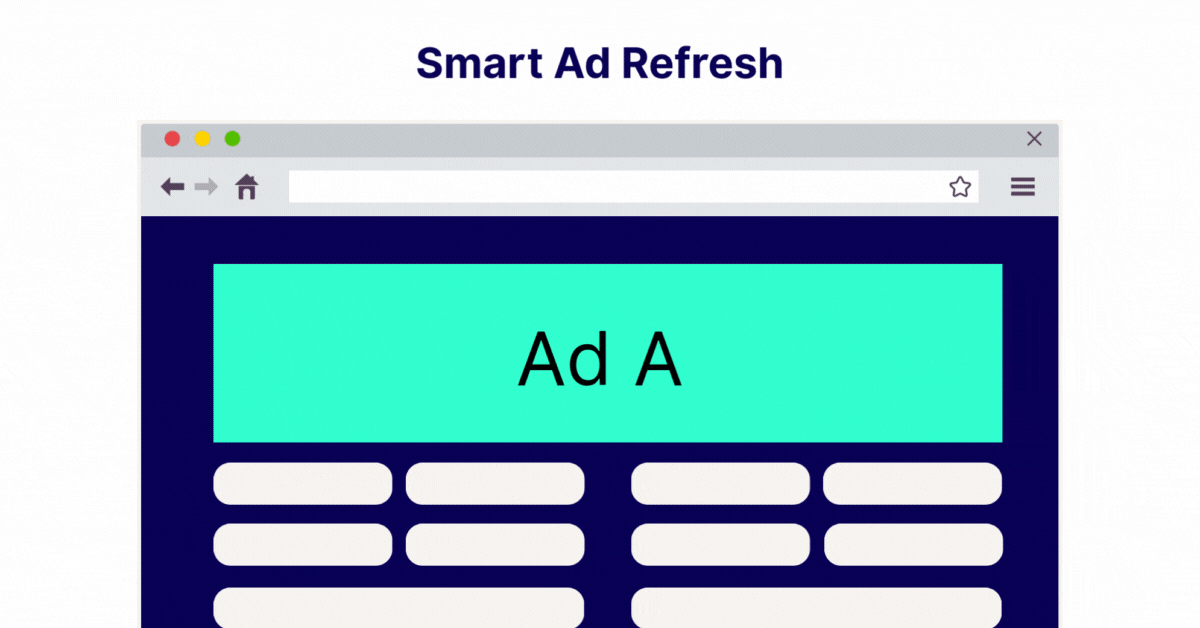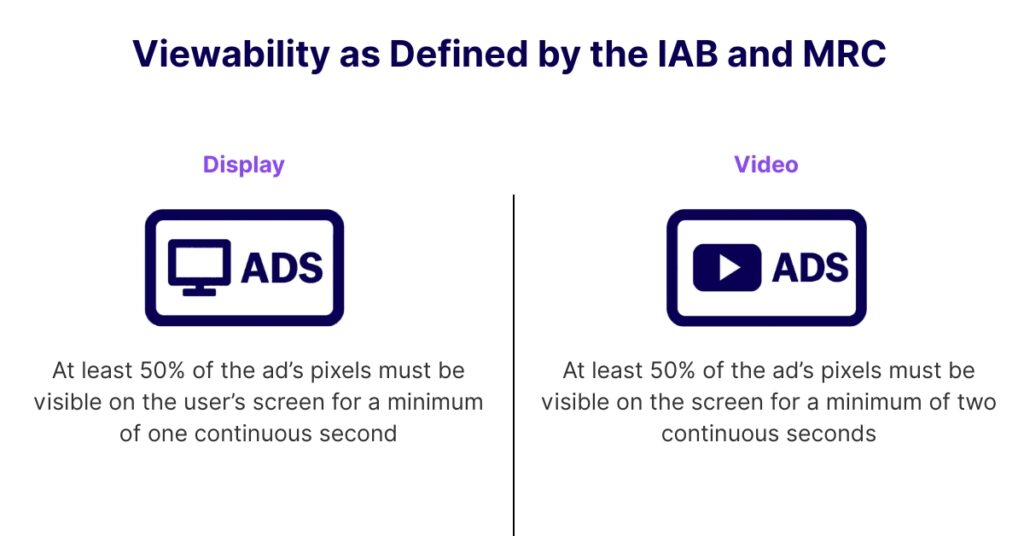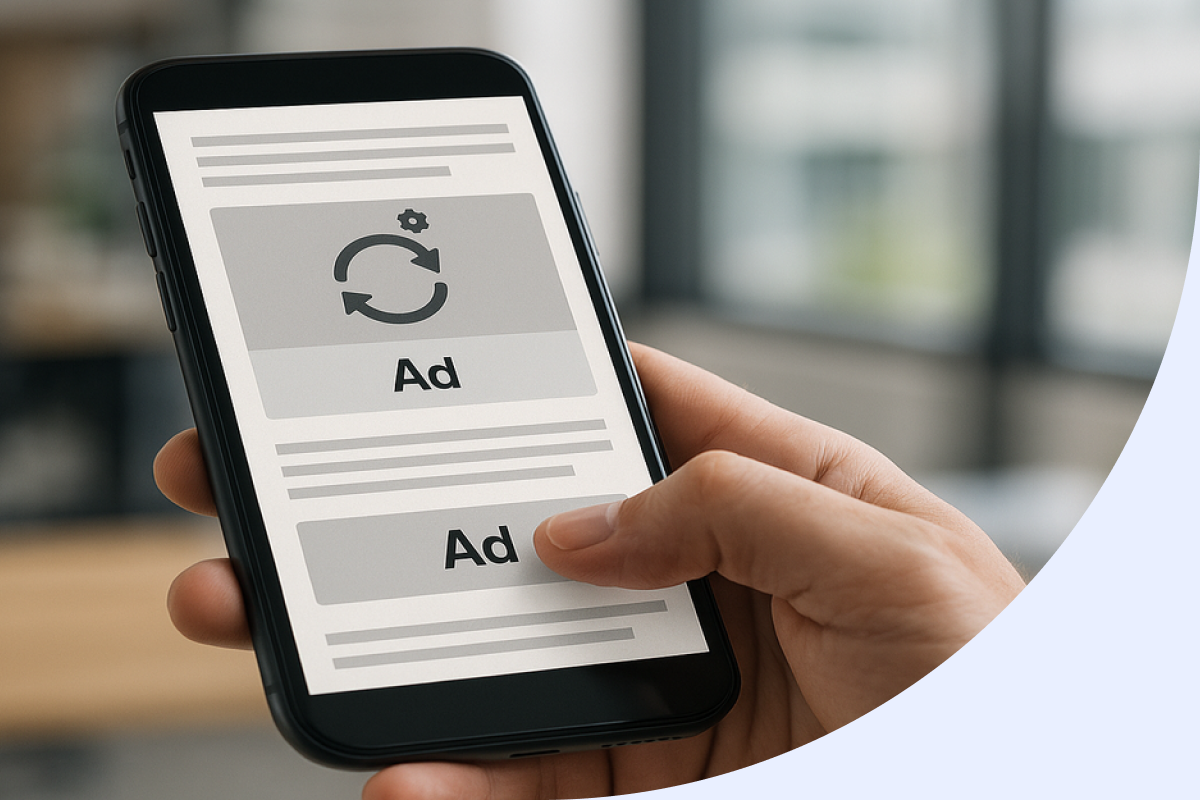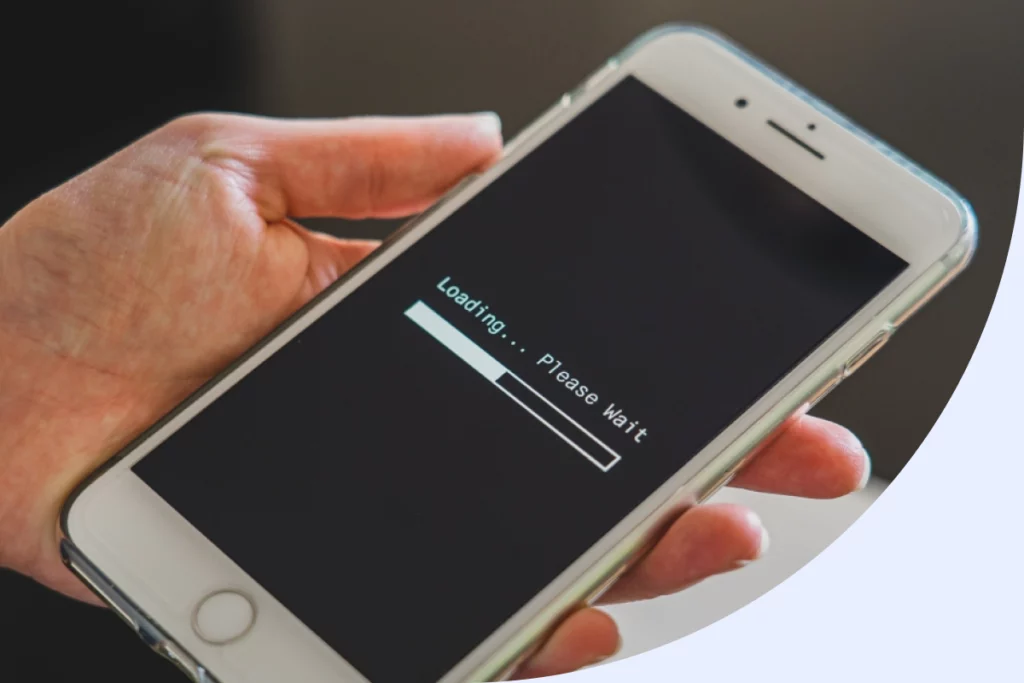Publishers are constantly under pressure to increase ad revenue without compromising their user experience or the value of their ad inventory. Some experiment with adding more ad units, others connect to new SSPs, and a few work to reduce their site’s latency. Among these strategies, ad refresh stands out for its ability to generate more value without reloading a page.
For years, ad refresh carried a mixed reputation due to bad practices leading to invisible impressions, layouts shifts, and an increased bounce rate. That has shifted.
Today, ad refresh is integrated to the majority of ad servers, like GAM. and the conversation has moved from frequency to quality. When refresh is triggered based on visibility, engagement, and contextual logic, it becomes a valuable asset.
This article breaks down how smart ad refresh works, what makes it successful, and why the benefits of ad refresh go far beyond just more impressions.
What Is Ad Refresh?
With standard ad serving, an ad loads when a user enters a page and stays there until the session ends or the page is reloaded. That single opportunity is all the publisher gets from that slot.
Ad refresh changes that.
Ad refresh is the practice of reloading an ad inside the same placement during the same user session. Instead of one impression per page load, the same slot can serve multiple impressions based on time on screen, visibility, or user interaction.

From Timers to Smart Logic
In its earliest form, auto-refresh ads relied on static timers. A script would reload ads at fixed intervals regardless of whether the ad was visible or the user was active. While this boosted impression volume, it often resulted in unseen ads and declining viewability.
The industry moved toward smart ad refresh, a more contextual, performance-oriented model. Instead of refreshing blindly on a timer, ads would reload only after meeting criteria like time in view, engagement, and visibility thresholds. For example, an ad might need to be 50% in view for 30 seconds before it becomes eligible for a refresh.
Though refresh strategies vary, most fall into four core types:
- Time-Based Refresh: This is the most basic form of ad refresh, in which ads reload at preset intervals. While easy to implement, it carries the highest risk. Without visibility checks, it can lead to wasted impressions and long-term CPM decline. The minimum refresh allowed by Google is 30 seconds.
- User Action-Based Refresh: A slight improvement, this method triggers a refresh based on user actions such as scrolls, clicks, or tab switches. While more reactive than timers, it still does not guarantee that the ad was viewed.
- Event-Based Refresh: Ads refresh when a specific event occurs on the site. Examples include new content loading, a live score update, or a news ticker refresh.
- In-View Refresh: This strategy waits until an ad has been visibly rendered on screen (typically 50 to 75 percent in view for at least 20 to 30 seconds) before initiating a refresh. It is the current industry standard.
The Benefits of Ad Refresh
1. Improved User Engagement
With ad ad refresh, publishers can display new ads at logical points during a session without distracting or annoying the visitor. By taking care of the refreshed ads’ position, publishers can encourage longer visits, and support deeper engagement with both content and ads.
2. Higher Revenue Potential
Ad refresh increases the total number of impressions per visit, giving advertisers more chances to bid and helping raise demand for inventory.
3. Better Viewability
Refreshing ads only when they are visible to users helps improve viewability, a very important metric, as high viewability leads to stronger auction performance and more consistent CPMs.
4. More Relevant Ad Targeting
Refreshing ads during a session creates opportunities to serve more personalized and timely messages. Publishers can use updated user data, browsing behavior, or session signals to serve ads that better match the user’s interests.
Viewability
Every impression is an opportunity for an auction. But not all auctions are equal. Buyers use viewability as one of the top KPIs to determine which inventory is worth bidding on

Setting up an example: imagine a publisher just starting to implement ad refresh across their site. At first, the setup is fairly simple: ads are refreshed using a basic timer, but only after they’ve been visible on screen for at least 15 seconds. With this early-stage approach, about 9% of total impressions come from refreshed ads. Even at this level, the publisher sees a small boost because those refreshed impressions tend to be more viewable than the initial page load. In fact, while the first impressions are averaging around 50% viewability, the refreshed ones already come in slightly higher, at 58%. That’s because refreshes are happening when ads are already in view, not based on time alone.
As the publisher starts refining the setup, the performance of the refreshed impressions improves even further. The viewability of these impressions climbs to over 90%, because they’re only triggered when a user is actively engaged and the ad stays clearly visible. This doesn’t just make the refreshed impressions better; it also creates a pool of highly valuable inventory that buyers want.
Importantly, this increase in refreshed viewability does not hurt the performance of the first impressions. Since the refresh only occurs after those first impressions are fully delivered and seen, the publisher adds high-quality impressions without negatively affecting the baseline.
This example shows how ad refresh, when done with the right logic, boosts the quality of your ad inventory.
Opti Digital’s smart ad refresh follows this setup and refreshes ads dynamically based on advanced, user-centric logic.
Ads are only refreshed after meeting a minimum “time in view” threshold and if the adslot is in the viewport, assuring a maximum visibility and engagement from the user after refresh.
Publishers can configure these thresholds and custom refresh rates at the ad slot level, even tailoring settings by demand type, bidder, or advertiser. The system tracks time-in-view in real time, supports all wrappers and placements (web, AMP, app), and offers granular controls like “no refresh” and special rules for high-impact formats.
By focusing on actual user attention and engagement, Opti Digital helps publishers maximize CPMs and fill rates, and maintain a premium user experience and inventory quality.
Get in touch if you would like more information.
Setting Ad Refresh Timers by Context
A well-timed refresh can generate meaningful new revenue, while poorly timed refreshes can lead to ad fatigue and reduced inventory quality. The key is to tailor ad refresh rates by factors such as device, ad format, or user behavior.
Format-Specific Suggestions
- Sticky ads: Refresh every 30 to 40 seconds, as they remain visible throughout the session.
- In-content ads: Refresh once per scroll path or after 60 seconds of view time.
- Sidebar units: Use scroll triggers or longer intervals (up to 90 seconds), as their visibility varies more.
- Display Ads: 30 to 60 seconds in-view, 2 to 3 refresh cap.
- Native Ads: Refresh on new content or contextual changes.
- Video Ads: Only after playback or pause.
Device-Specific Suggestions
- Mobile: Allow shorter thresholds (20 seconds) for persistent placements, but ensure ads are in view before refreshing.
- Desktop: Use longer time-in-view requirements (25 to 30 seconds) and refresh less frequently unless the ad is sticky.
Ad Fatigue Prevention
It is important to recognize the role of ad fatigue prevention in any ad refresh strategy.
Signs of ad fatigue include:
- Declining CPMs after each refresh
- Fewer bids on later impressions
- Users disengaging due to repeated visual changes
To avoid these issues, publishers can set refresh caps. For example, limit a single unit to three refreshes per session. Some placements may support more, others less. Monitoring your KPIs is key.
Ad Manager Hub by Opti Digital helps publishers do this effectively, as it gives access to granular statistics on eCPM and Page RPM. You are able to see these details and more from across your inventory in one centralized dashboard!
Even with a well-built smart ad refresh strategy, ad fatigue prevention ensures that impressions stay valuable over time. It’s not just about how many impressions you serve, but how effective they remain.
Final Notes
In conclusion, a system of global refreshing of ads with a granular and controlled configuration can help publishers enjoy the many benefits of ad refresh.
In a programmatic world where attention is scarce and quality matters, smart ad refresh is essential.






